|
no. 4 october - december 2006 2007: Year of Three Major Centenaries for the Order to Celebrate The year 2007 promises to provide many opportunities for the Order, individual Provinces and monasteries, as well as individual Carmelites to celebrate. That year will be the VIIIth centenary of the Formula Vitae given by St. Albert of Jerusalem to the hermits on Mount Carmel, the VIIth centenary of the death of St. Albert degli Abbati of Trapani, one of the first Carmelite saints venerated in the Order, and the IV Centenary of the death of St. Mary Magdalene de’ Pazzi, the Florentine mystic. The year 2007 will be a confirmation of the words of Pope John Paul II that "You have not only a glorious history to remember and to recount, but also a great history still to be accomplished!" The 800 Years of Albert of Jerusalem’s Formula Vitae Albert of Jerusalem’s presentation of a Formula Vitae to the hermits on Mount Carmel represents the beginnings of the Carmelite Order. Although the exact date is somewhat uncertain, the 2001 General Chapter decreed that the celebrations should take place in 2007. The Order had already celebrated the 750 th anniversary of the approval of the Rule of Carmel by Pope Innocent IV in 1997. That Rule was Albert’s Formula Vitae revised and adapted by the pope. Various celebrations took place at that time throughout the Order which included various initiatives to study the document in depth.An academic symposium on the Carmelite Rule was held in Lisieux, France in July 2005. Twenty-five experts in a variety of disciplines gathered. The purpose of the study was to deepen the historical context and experience of the first group of Carmelites on Mount Carmel, develop a critical texual analysis of the Formula Vitae, examine how the Rule of Carmel has been seen by the succeeding generations of Carmelites, and analyze some of the contemporary approaches to the text of the Formula Vitae. A celebration of the 800 th anniversary of the Rule of St. Albert for the Carmelite Family in Latin America and the Carribean was held in Lima, Peru on October 25-29. (See article page 5).The Carmelite Family will gather in Rome on May 12th with Cardinal Rode for a Eucharist celebrating the Rule. Another major celebration of the Rule of St. Albert will take place during the 2007 General Chapter. The delegates to the Chapter will be joined by representatives of the Carmelite enclosed nuns, the affiliated sisters, the Carmelite laity from around the world, and the Discalced Carmelite leadership to conclude the 800 th anniversary of the Formula Vitae.Logo for the conference for the 800th Anniversary of the Rule of St. Albert in Lima, Peru in October 2006.
The second centenary to celebrate in 2007 is the 700 years since the death of Albert of Sicily. Albert was born in Trapani, on the eastern edge of the island of Sicily. He was noted for his dedication to mendicant preaching and for his miracles. In 1280 and 1289 he was in Trapani and then later in Messina. In 1296 he was Prior Provincial of Sicily. He had a passion for prayer, especially a profound devotion to the Child Jesus. He died in Messina probably in 1307. He was the first saint to arouse devotion in the Order and was considered patron and protector or, as it was called in the past, "Father" of the Order. It was a title he shared with another Sicilian Carmelite of his day, St. Angelo. In the XVI century, it was decreed that every Carmelite church would have an altar dedicated to Albert. Many of the Carmelites, including Teresa of Jesus and Maria Magdalene de’ Pazzi were devoted to the saint. His cult extended throughout the Order which perhaps explains the abundant iconography that exists even today. Albert is usually pictured with a lily, symbol of his victory over his passions at the beginning of his religious life, in the act of conquering demons or of working miracles. Frequently, pictures also show him with the Child Jesus in his arms. A symposium on the life and times of St. Albert was held in Trapani, Sicily, in early May 2006. (See related article) St. Albert of Trapani; Chapel; Aylesford, England.
This centenary celebration actually began on the anniversary of the saint’s death in May 2006 but continues throughout the year and will conclude on the same day, May 25, in 2007, the actual 400 th anniversary date.Coming from a family of Florentine nobility, the saint was born on April 2, 1566. From childhood, she demonstrated a profound awareness of God, an ardent love for the Eucharist, and a strong inclination towards penance. On the advice of her confessor, she was allowed to receive her first communion, at an earlier age than was customary at the time. At age 18, she was admitted to the Carmelite enclosed community of Santa Maria degli Angeli in Florence. She served the community in a variety of ministries while undergoing great physical suffering and a harsh spiritual experience. She died on May 25, 1607. An intense spiritual life, united with a conscientious observance of the religious vows, conducted in a hidden life of prayer and denial. She was seized by a great desire for the renewal of the Church, including an urgent reform and necessary expansion. She prayed that the "Christs" (the priests) would be the new light in the world and that the unfaithful would return to the Church. Mary Magdalene was also devoted to Our Lady and contributed much towards the Carmelite Marian devotion to the "Most Pure Virgin," holding that the beauty of Mary was her purity. Her mystical experiences are collected in the so-called "original manuscripts," the notes taken by the other sisters recording what the saint did or said during the ecstasies. The devotion to this Florentine saint developed soon after her death. By the second decade of the 17 th century, throughout Italy and in many other places there were claims of graces received and miracles obtained through her intercession. After her beatification in 1626, and canonization on April 22, 1669, the devotion passed beyond the Italian border and spread throughout France, Spain, Portugal.In the tradition of the Order, dating from the XVI century, St. Mary Magdalene de’ Pazzi is considered the "Protector of the Carmelite Third Order." Some of the celebrations around the anniversary of St. Mary Magdalene’s death were presented in earlier issues of CITOC.
A celebration of the VII centenary of the death of Carmelite Saint Albert of Sicily was held during the evenings of May 8-10, 2006. Entitled "A Living Saint in the Hearts of Our People," the celebration took place in the diocesan seminary in Trapani, Sicily as the event was sponsored by the diocese and the Carmelites. About 220 people attended. "We were blessed with some excellent presentations and great participation by the people connected to the Carmelite sanctuary, the cities of Trapani (which has Albert as its patron) and Erice, and even beyond," said Giovanni Grosso, O. Carm., historian and one of the organizers of the course.
The following day, Carmelite Enrico Pinci presented "St. Albert in the Popular Tradition and in Folklore." Dr. Maurizio Vitella, an art historian, spoke on "The Presence and Places of Worship of St. Albert in His Cities of Trapani, Erice, and Messina." The conference concluded with an examination of the spirituality of St. Albert. Giovanni Grosso presented "Roots of the Holiness of St. Albert, Carmelite." This was followed with a report by General Archivist and Carmelite historian, Fr. Emanuele Boaga, O. Carm., entitlted "The Modern Ecclesiology of St. Albert for a New Evangelization" which was read as Fr. Boaga could not attend. Advertisement for conference on St. Albert of Trapani. "Death of St. Albert of Trapani" (The Carmelites, Monastery of St. Lucia, Castellina, Florence)
Members of the OCARM and OCD Family gathered at Villa Carmelitas, the Peruvian Carmelite retreat center near Lima, on October 24 – 28 to study and celebrate the 800 th anniversary of the Rule of St. Albert. Some 130 participants represented Carmelites in Argentina, Bolivia, Brazil, Chile, Cuba, the Central American Province of the OCDs, the Dominican Republic, Colombia, Equador, Mexico, Paraguay, Peru, Uruguay, the USA, and Venezuela.The five day meeting featured lively liturgies, a concert of songs written and performed by a young Mexican Lay Carmelite, a series of presentations on the Rule, a theatrical production at Los Carmelitas School in Lima, and even a small earthquake. Among the presenters were Joseph Chalmers, Prior General of the Carmelites, Luis Aróstegui, Propositor General of the Discalced Carmelites, Camillo Maccise, former OCD Propositor General, Carlos Mesters of the OCARM General Council, Sr. Edith de Jesús Pinto Tipismana, OCD, Sr. Tránsito Valdez Crespín, CMST. The conference was organized by the Comisión Mixta OCARM-OCD para Latinoamérica y el Caribe which is headquartered in Lima. According to Nícolas García, OCD, member of the OCD General Definitory and the Mixed Commission, the meeting was of great value. "I feel it has been a very worthwhile gathering. We are returning to the idea of being a family which means a rediscovery of our common roots." This idea of Carmelite Family was echoed by several of the participants. Deneval Januario, OCD, the Director of Novices in Southeast Brazil, said "My overall impression is of one rule, one family. This type of meeting helps to break down prejudices that, in the past, have sometimes been passed onto us. You come here and discover that we are more similar than different. I have really experienced us as a family here and this is a big benefit."
Not all the participants were Carmelites. Fr. José Ramon Benito Alzaga is a diocesan priest from Mexico City who lives and works with members of De María Imaculata (RMI). He attended the course the Discalced Carmelites offered on John of the Cross and Teresa of Avila in 2003-2004. "I have always been close to the Carmelites of Mexico. I have a long time interest in knowing more about religious orders but especially the Carmelites. I feel an attraction to the contemplative life." Rita de Cassia Ramalno, a lay Carmelite and lawyer specializing in family and labor law from João Pessoa, Pernambuco in Brazil, has attended several international gatherings for Carmelite laity. This gathering was particularly important for her. "These days have provided us with the opportunity to reflect on our experience as Carmelites in light of the Rule of St. Albert. Here we have been able to re-read the Rule according to the experiences that were shared in the various presentations." Perhaps expressing the thoughts of most at the seminar, Sr. Bertha Garbay, a Discalced Carmelite nun from Ibarra, Ecuador, summed up her impressions of her first such meeting, "It is just a great joy to see Carmel as a great family with a charism and saints, and methods of prayer that help each of us here and are of value to the entire world." The website for the Comisión Mixta OCARM-OCD para Latinoamérica y el Caribe is: www.comisionmixta.org Celebrates 100 Years of the Basilica Organ On October 1, 1905, a contract for the construction of a pipe organ for Il Carmine Maggiore, the major Carmelite basilica in Naples, Italy was signed by Carmelite Elia Alleva and Francesco Mascia and his son. The console was to be the work of Eduardo Bottigliero. The Prior General had sent Fr. Elia Alleva to Naples in March 1895 to re-establish the Order following suppression of the religious orders in 1866. In that point in the war of unification of Italy, the members of the Order had been expelled from the monastery and the civil authorities used the monastery as a prison and public offices, leaving only four cells for the religious. Fr. Elia is remembered for his zealous renewal of the sanctuary and the gradual re-establishment of the Carmelites in their own ancient house, and the purchase of this fine musical instrument for the basilica. By the end of 1896, the Carmelites were allowed to return to their monastery. It would be 10 years before the organ became a reality. To prepare the basilica for the new instrument, the choir loft was redesigned, attaching it to the inside of the face of the basilica. A passageway was eliminated. The flooring was reinforced to be able to support the weight of the organ. The remodeling cost 5,131.70 Italian lire. The ceiling of the choir loft and the housing for the organ cost 1,816.00 lire. The electric motor, a relatively new technology for the time, and its installation was 2,137.25 Italian lire.
The result was a magnificent musical instrument which adds much to the religious celebrations of the Carmelite basilica as well as its appearance. Yet only about 1% of the organ pipes are readily visible from the church. The instrument contains another 4,011 pipes which are hidden. The pipes vary in length from 5 centimeters to a maximum of 5.50 meters, the larger ones being the most visible from the floor of the church. Another thousand pipes are in the small organs in the nave of the church.
The organ was ready for the celebrations on July 10-12 and a test of the instrument, with the public, was held by three great maestros of the day, Marco Enrico Bossi, Ulisse Matthey and Eduardo Bottigliero. Following the organ’s inauguration, the three experts wrote out the following evaluation of the instrument:
Top: One of the small organs in the nave of the basilica. |
|
RETURN TO THE INDEX FOR 2006 | RETURN TO THE INDEX FOR THIS ISSUE INDEX OF CARMELITE
WEBSITES |

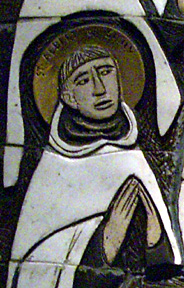

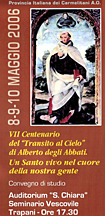
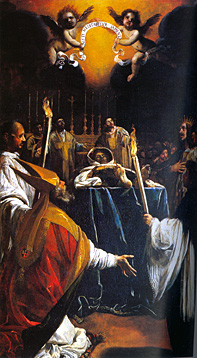 On the first day of the conference, Prof. Filippo Burgarella from the
Università degli Studi della Calabria presented "An
Historical-Biographical Profile of St. Albert degli Abbati in the Sicily
of His Day." This was followed by an examination of the Abbati Family in
Trapani in the 1300’s. Dr. Daniela Scandariato then presented "The
Development and Richness of the Iconography of St. Albert in the 14
On the first day of the conference, Prof. Filippo Burgarella from the
Università degli Studi della Calabria presented "An
Historical-Biographical Profile of St. Albert degli Abbati in the Sicily
of His Day." This was followed by an examination of the Abbati Family in
Trapani in the 1300’s. Dr. Daniela Scandariato then presented "The
Development and Richness of the Iconography of St. Albert in the 14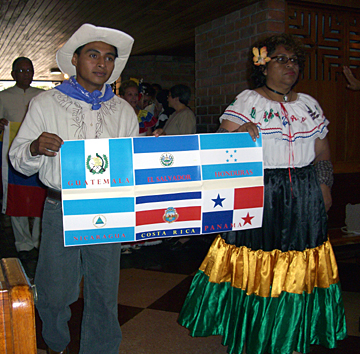
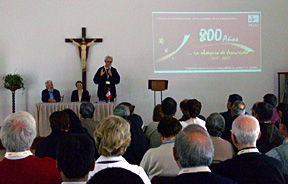 Carlos Mesters, O. Carm., General Councilor and part of the team which
prepared the meeting felt that the long period of preparation had a big
pay off and not just for those who attended. "All of the communities of
Latin America were asked to meditate on the Rule of St. Albert as part of
the preparation for the conference. They focused on seven areas for
reflection: following Jesus, prayer, silence, lectio, work, Mary and
Elijah, fraternity."
Carlos Mesters, O. Carm., General Councilor and part of the team which
prepared the meeting felt that the long period of preparation had a big
pay off and not just for those who attended. "All of the communities of
Latin America were asked to meditate on the Rule of St. Albert as part of
the preparation for the conference. They focused on seven areas for
reflection: following Jesus, prayer, silence, lectio, work, Mary and
Elijah, fraternity."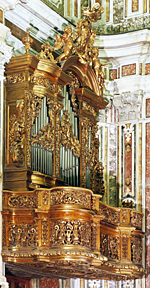
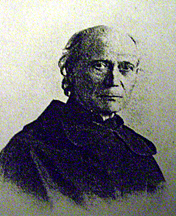 Mr. Mascia and his son received 40,000.00 Italian lire for the
construction of the mechanical part of the instrument.
Mr. Mascia and his son received 40,000.00 Italian lire for the
construction of the mechanical part of the instrument.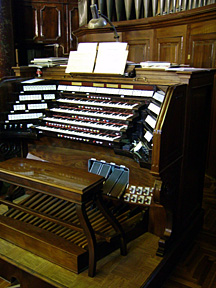 While the organ depends upon electricity for the air pump and the
transmission of signals from the keyboard to the air distributor, it is
not an electric organ. Its sound comes entirely from the pipes and not
from any electronics.
While the organ depends upon electricity for the air pump and the
transmission of signals from the keyboard to the air distributor, it is
not an electric organ. Its sound comes entirely from the pipes and not
from any electronics.